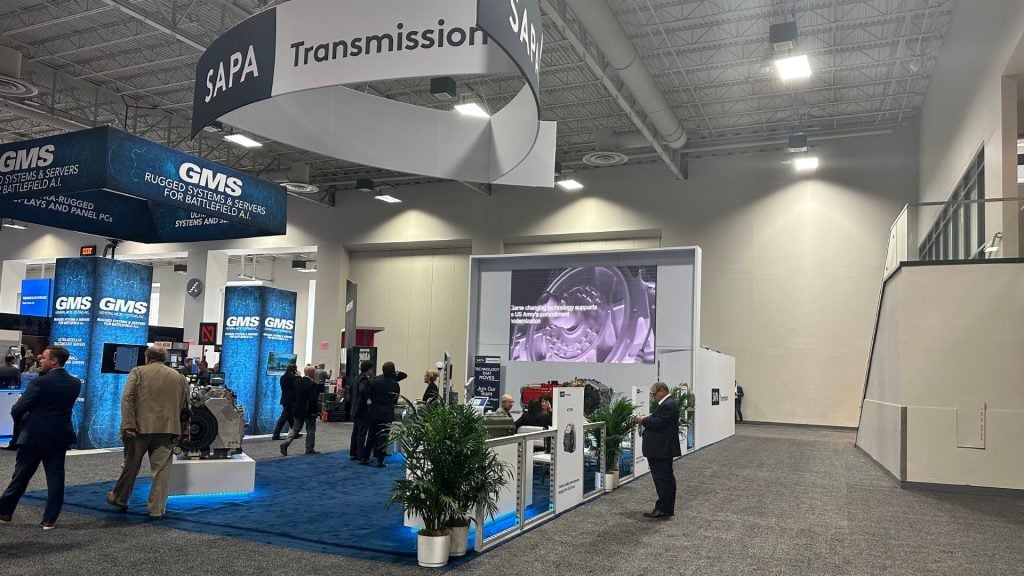
Introduction
Gone are the days when a trade show booth was just a static display. Today, attendees expect immersive, 360-degree brand experiences that engage them on multiple levels, leaving a lasting impression. A well-designed, all-encompassing experience can transform your exhibit into a powerful tool for brand storytelling, audience engagement, and long-term connection.
Here’s how to create dynamic, 360-degree brand experiences that captivate audiences and elevate your trade show presence.
1. Think Beyond the Booth: Full Immersion
To create a 360-degree experience, your design must extend beyond just the walls of your booth. Think of the entire event as your stage and your brand as the experience.
- Pre-Show Marketing: Start building your brand experience before attendees even arrive. Use social media campaigns, email teasers, and special invites to set the tone and generate excitement.
- Branded Touchpoints: Extend your brand’s presence through key touchpoints outside the booth, such as digital signage, event sponsorships, and even in-app advertising for the event.
2. Integrate Storytelling at Every Turn
Your brand story should be woven into every aspect of your exhibit, creating a cohesive narrative that draws visitors in and guides them through the experience.
- Design for Discovery: Create multiple layers of interaction that invite visitors to explore different elements of your brand. Whether it’s through product displays, interactive kiosks, or visual storytelling, every aspect of your booth should reveal a new part of your brand’s story.
- Consistent Messaging: From your booth design to your handouts, every element should communicate a consistent brand message. This consistency helps reinforce your identity and ensures visitors understand what sets your brand apart.
3. Utilize Interactive Technologies
One of the best ways to immerse visitors in a 360-degree brand experience is through interactive technology. It allows attendees to engage directly with your brand, turning passive observation into active participation.
- Virtual and Augmented Reality: Give visitors an immersive experience by incorporating VR or AR elements. Whether it’s a virtual tour of your products or an interactive game that educates them about your brand, these tools can create unforgettable experiences.
- Interactive Displays: Touchscreens, tablets, and live product demos allow attendees to interact with your brand on their own terms, fostering a deeper connection.
4. Design for Multi-Sensory Engagement
A 360-degree experience involves more than just visual elements—it should engage all the senses for maximum impact. Incorporating sound, light, and even scent into your exhibit can create a richer, more immersive environment.
- Lighting Design: Use dynamic lighting to highlight key areas of your exhibit, guide visitor flow, and set the tone. Interactive lighting that changes based on attendee movement can also add an extra layer of engagement.
- Soundscapes: Curate sound to enhance the mood of your booth, whether it’s subtle background music or a custom sound environment tied to your brand’s identity.
- Tactile Elements: Encourage visitors to physically interact with your brand, whether through product samples, touchable displays, or textured materials.
5. Personalization for Deeper Engagement
Creating personalized experiences within your 360-degree design can make visitors feel like the exhibit was made specifically for them. Personalization drives deeper engagement and leaves a stronger, more lasting impression.
- Data-Driven Customization: Use attendee data to tailor the experience. For example, interactive displays can provide content based on each visitor’s industry or interests.
- Personalized Interactions: Equip your staff with the tools they need to offer tailored recommendations or demonstrations based on each visitor’s needs and preferences.
6. Incorporate a Digital Layer
In today’s hybrid world, your exhibit experience should have both physical and digital components to reach a wider audience.
- Live Streaming and Virtual Tours: For attendees who can’t be there in person, offer a digital version of your exhibit through live streaming, virtual tours, or webinars. This expands your reach and allows you to engage with a global audience.
- Digital Follow-Up: After the event, keep the momentum going with personalized digital content that recaps the experience, offers additional resources, or provides exclusive deals for attendees.
7. Create Shareable Moments
Your brand experience shouldn’t end at the booth—encourage visitors to share their experience with their networks. This not only amplifies your brand but also provides additional engagement opportunities.
- Photo Opportunities: Design areas of your booth that are Instagrammable, offering attendees an eye-catching space to take pictures and post about their experience.
- Branded Hashtags: Create a custom hashtag for your event presence and encourage visitors to use it when they share their experience on social media.
Conclusion: Crafting 360-Degree Experiences for Maximum Impact
Designing a 360-degree brand experience requires creativity, thoughtful planning, and the right mix of sensory engagement, technology, and personalization. By creating an exhibit that immerses visitors at every touchpoint—from pre-show marketing to the final follow-up—you ensure that your brand is not only seen but truly experienced. This comprehensive approach not only captures attention but also builds lasting connections that extend far beyond the trade show floor.


 Global
Global Europe
Europe

